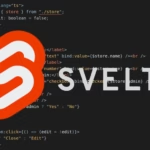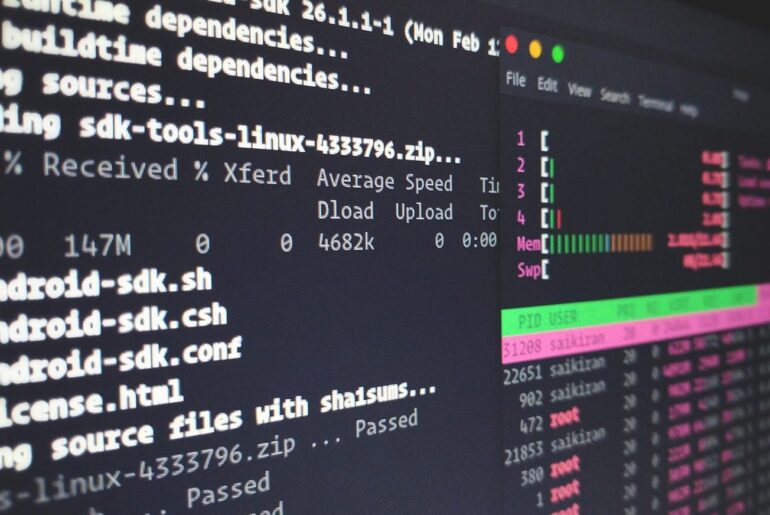Alright—let’s do this the right way, once, and make it stick. Below is an evergreen, no-nonsense guide to deploying a Rust web app on DigitalOcean. I’ll give you two battle-tested deployment paths you can rely on for years:
- App Platform (PaaS—fast, managed, minimal ops)
- Droplet + Nginx + systemd (classic VM—full control, predictable, cheap at small scale)
I’ll also show where Kubernetes fits, how to wire managed Postgres/Redis, and how to keep TLS and health checks boring and automated.
The short version (so you know where we’re heading)
- If you just want it live with auto-deploys from Git and minimal ops, use App Platform with a Dockerfile. It’ll build your image and run it; connect a Managed Database if needed.
- If you prefer the traditional route and exact control, use a Droplet (Ubuntu 24.04), compile a release build, run under systemd, and put Nginx in front with Let’s Encrypt. Solid, cheap, transparent.
- For big teams or multi-service setups, DOKS (Kubernetes) is there; you’ll build and push an image, deploy via manifests/helm, and stick a DO Load Balancer in front with a health check.
Prerequisites (common to all paths)
- A Rust service that binds to
0.0.0.0:8080(or your chosen port). Axum, Actix, Rocket—doesn’t matter. - A
Dockerfile(strongly recommended even if you deploy to a VM; it standardizes builds). - A domain ready to point at DigitalOcean (for TLS and clean URLs).
- A place for secrets (App Platform env vars, or a
.env+EnvironmentFilefor systemd).
Option A — App Platform (PaaS, Git-to-deploy)
Why: You want deploys tied to Git, built automatically, and you don’t want to babysit servers. App Platform will build your container from source or pull a registry image; it exposes env vars, health checks, scaling, and managed TLS.
1) Add a multi-stage Dockerfile
Put this in your repo root. It builds a small, static-ish binary (glibc by default; you can go MUSL later if you need it).
# ---- builder ----
FROM rust:1.81 as builder
WORKDIR /app
# Cache deps
COPY Cargo.toml Cargo.lock ./
RUN mkdir src && echo "fn main() {}" > src/main.rs
RUN cargo build --release
RUN rm -f target/release/deps/*
# Build
COPY . .
RUN cargo build --release
# ---- runtime ----
FROM debian:bookworm-slim
RUN useradd -m -u 10001 appuser
WORKDIR /app
COPY --from=builder /app/target/release/your-app /usr/local/bin/your-app
# minimal runtime deps; adjust if you use OpenSSL, etc.
RUN apt-get update && apt-get install -y --no-install-recommends ca-certificates && rm -rf /var/lib/apt/lists/*
USER appuser
ENV RUST_LOG=info
EXPOSE 8080
CMD ["/usr/local/bin/your-app"]If you need truly static linking, target MUSL and sort out linker toolchains (watch for recent -crt-static/linker nuances). Good later—but don’t make day one harder than it needs to be.
2) Create the app from the DO control panel (or doctl)
- Control Panel → Create → App Platform → pick your Git repo → select the Dockerfile → set the run command if needed.
Or with doctl (after you’ve generated a token and logged in):
doctl auth init
doctl apps create --spec app.yamlThe app.yaml is App Platform’s spec (components, env vars, routes). You can check the CLI reference when you want to automate CI/CD later.
3) Configure env vars & health checks
- Add
PORT=8080(if your framework reads it) and your secrets (DB URLs, API keys). - Set a health check path like
/healthzreturning 200. It affects auto-rollouts and LB health; treat it as a contract with the platform.
4) Databases (Managed Postgres/MySQL/Redis)
Attach a Managed Database and read the connection string from App Platform’s “Connection details.” DO gives you the exact DSN and CA. Use SSL by default.
5) SSL/TLS and domains
App Platform can provision Let’s Encrypt for your domain automatically. Point your DNS (A/AAAA or CNAME) as directed in the UI—done.
Redeploys are automatic on Git push if you enabled that. Manually, you can force them with:
doctl apps create-deployment <APP_ID> --update-sourcesNote: You don’t “SSH into” App Platform instances—that’s by design. Logs/exec are handled in the UI/CLI.
Option B — Droplet (Ubuntu) + systemd + Nginx (the classic, dependable way)
Why: You want control, you’re cost-sensitive, or you just prefer knowing exactly what’s running. This is the old reliable stack: your Rust binary runs as a service, Nginx fronts it with TLS, and DO Cloud Firewalls restrict the blast radius at the network level.
1) Create the Droplet
Choose Ubuntu 24.04 LTS. Size it with RAM/CPU that matches your workload. Assign an SSH key. Consider enabling Monitoring when you create it.
2) Install runtime deps and create a user
sudo apt update
sudo apt install -y nginx certbot python3-certbot-nginx
sudo useradd -m -u 10001 appuser || true3) Build your app (two approaches)
A) Build on the Droplet (simple):
sudo apt install -y build-essential pkg-config libssl-dev
curl https://sh.rustup.rs -sSf | sh -s -- -y
source $HOME/.cargo/env
git clone https://github.com/you/your-app.git
cd your-app
cargo build --release
sudo cp target/release/your-app /usr/local/bin/your-app
sudo chown root:root /usr/local/bin/your-appB) Build in Docker and copy the binary (repeatable): build locally with the Dockerfile above, docker cp the artifact out of the builder stage, and scp it to the server. This keeps the server clean.
4) Create a systemd service
# /etc/systemd/system/your-app.service
[Unit]
Description=Your Rust app
After=network.target
[Service]
User=appuser
Group=appuser
EnvironmentFile=-/etc/your-app.env
ExecStart=/usr/local/bin/your-app
Restart=always
RestartSec=2
LimitNOFILE=65535
AmbientCapabilities=CAP_NET_BIND_SERVICE
[Install]
WantedBy=multi-user.targetsudo systemctl daemon-reload
sudo systemctl enable --now your-app
sudo systemctl status your-app5) Nginx reverse proxy
# /etc/nginx/sites-available/yourapp.conf
server {
listen 80;
server_name yourapp.com www.yourapp.com;
location / {
proxy_pass http://127.0.0.1:8080;
proxy_set_header Host $host;
proxy_set_header X-Forwarded-For $proxy_add_x_forwarded_for;
proxy_set_header X-Forwarded-Proto $scheme;
proxy_read_timeout 60s;
}
}sudo ln -s /etc/nginx/sites-available/yourapp.conf /etc/nginx/sites-enabled/yourapp.conf
sudo nginx -t && sudo systemctl reload nginxThis is the standard “Rust app behind Nginx” pattern; we’re forwarding headers and setting sensible timeouts.
6) HTTPS with Let’s Encrypt (auto-renewing)
sudo certbot --nginx -d yourapp.com -d www.yourapp.com --agree-tos -m you@dropletdrift.com --redirectcertbot edits the Nginx site to serve HTTPS and installs a timer for renewal. That’s your long-term TLS solved.
7) Lock it down with DO Cloud Firewalls
- Only allow inbound 22 (SSH), 80/443 (web), and your private ports as needed. Deny everything else by default. Attach the firewall to the Droplet. This is network-layer insurance you get “for free.”
8) Health checks and load balancer (optional)
If/when you add a DO Load Balancer in front, expose /healthz and set reasonable thresholds—unhealthy backends drop out automatically until they pass again.
Option C — Kubernetes on DigitalOcean (DOKS), when you outgrow one box
You’ll containerize your app (same Dockerfile), push to a registry, deploy to a DOKS cluster, and front it with a DO Load Balancer via an Ingress Controller. It’s standard K8s, just with DO operating the control plane for you.
High-level flow:
- Build and push image → DOCR or Docker Hub.
Deployment(pods) +Service(ClusterIP) +Ingress(Nginx ingress) → DO Load Balancer gets created automatically.- Health checks on the LB keep traffic on healthy pods.
This is the right move for multiple services, canary/blue-green rollouts, and horizontal scaling without re-architecting later.
Attaching a Managed Database (Postgres example)
- Create the DB cluster in DO, add your Droplet/App as an authorized source (or VPC-only).
- Grab the connection string from the UI and set it as
DATABASE_URL. Most Rust ORMs (SQLx, Diesel) read from it directly. Use SSL mode as provided by DO.
If you’re on App Platform, the “Connection Details” UI gives you a drop-in DSN; on DOKS, mount it as a Kubernetes Secret; on a Droplet, put it in /etc/your-app.env.
Operational polish that pays off
Zero-downtime restarts on Droplets.
Use two systemd units (blue/green) on different ports and swap Nginx upstream with a symlinked conf + nginx -t && systemctl reload nginx. Simple, brutally reliable.
Observability.
App Platform has logs in UI/CLI. On Droplets, journalctl -u your-app -f for app logs; Nginx in /var/log/nginx. DO Monitoring/Graphs tell you if the box is choking.
Secrets.
Don’t bake secrets into images. App Platform env vars / K8s Secrets / /etc/your-app.env on Droplets (root-only, chmod 600).
Static assets.
If you serve lots of static files, consider Spaces with its built-in CDN. Keep the Rust binary focused on dynamic work. It’s S3-compatible; any S3 client works.
Droplet metadata.
Need instance metadata or user-data? There’s a simple metadata API if you ever bootstrap instances automatically.
Troubleshooting quick hits
- App won’t start on App Platform? Inspect build logs; confirm it’s listening on the PORT the platform expects (often injected). Health check should return 200 fast.
- TLS on Droplet is flaky? Re-run
certbot --nginx …, check Nginx includes, and ensure DNS is actually pointing at your Droplet. - Load balancer shows backends unhealthy? Usually a health check path mismatch, firewall blocking the check port, or timeouts too strict.
A minimal, production-lean Axum server (for reference)
Keep it boring and predictable. You can drop this into any of the three deployment paths.
use axum::{routing::get, Router};
use std::net::SocketAddr;
#[tokio::main]
async fn main() {
let health = get(|| async { "OK" });
let app = Router::new()
.route("/healthz", health)
.route("/", get(|| async { "hello, world" }));
let port = std::env::var("PORT").ok()
.and_then(|p| p.parse::<u16>().ok())
.unwrap_or(8080);
let addr = SocketAddr::from(([0, 0, 0, 0], port));
println!("listening on {}", addr);
axum::Server::bind(&addr)
.serve(app.into_make_service())
.await
.unwrap();
}When to choose what (pragmatic rubric)
- App Platform — solo/team, you want speed, auto TLS, auto-deploys, and fewer knobs. Most small/medium apps fit here well.
- Droplet — you want total control, stable costs, root access, and you’re comfortable with Linux basics. It’s the most “traditional” path and still excellent.
- DOKS — you already speak Docker + K8s or you’re orchestrating multiple services with shared runtime policies. It scales cleanly.
Final word
Fancy is fragile. Start simple, prove your traffic patterns, then add complexity when there’s a clear payoff. If you follow the App Platform or the Droplet recipe above, you’ll have a Rust service that deploys cleanly, serves over HTTPS, and stays easy to operate a year from now—because we leaned on standards, not heroics.
If you want, tell me in the comments which framework you’re using (Axum/Actix/Rocket) and whether you prefer PaaS or VM, and I’ll tailor a drop-in Dockerfile, App Platform spec, or the exact Nginx/systemd files for your project.










